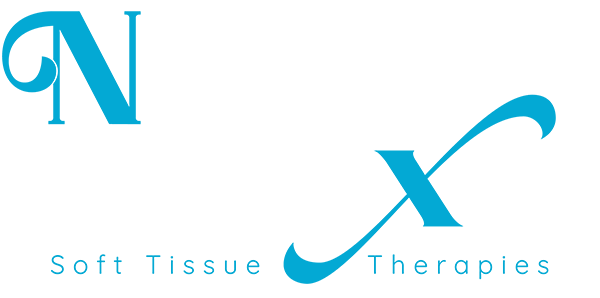Soft Tissue Therapy ... Bridging the gap
Soft Tissue Therapy, bridging the gap between massage & physiotherapy
In the world of physical health and rehabilitation, soft tissue therapy is carving out its place as a vital, standalone discipline. Often misunderstood as simply a form of deep tissue massage, soft tissue therapy is much more. It fills the gap between traditional massage therapy & physiotherapy by combining hands-on techniques with clinical assessments and tailored exercise plans to support recovery, enhance performance, but also manage injuries.
While soft tissue therapy shares some similarities with both massage therapy & physiotherapy, it is a unique practice with its own scope & limitations. Here's how soft tissue therapy bridges the gap between these two professions and why it plays such a crucial role in modern health care.
What is Soft Tissue Therapy?
Soft tissue therapy involves the assessment, treatment, & rehabilitation of the body’s muscles, tendons, ligaments, & fascia...aka the soft tissues. It integrates a variety of hands-on techniques, including:
- Deep Tissue Massage…for tension relief and improved circulation.
- Myofascial Release…to address restrictions in connective tissues.
- Trigger Point Therapy…targeting specific areas of muscle tightness.
- Stretching and Mobilisation…Improving flexibility and range of motion.
- Specialist Techniques...such as MET's (Muscle Energy Techniques) & STR's (Soft Tissue Release).
How Soft Tissue Therapy Differs from Physiotherapy
Although soft tissue therapy overlaps with physiotherapy in some areas, it is not a substitute for the comprehensive medical expertise of a physiotherapist. Physiotherapists are licensed medical professionals who diagnose and treat a wide range of physical conditions, including those related to bones, joints, & the nervous system.
Soft tissue therapists, on the other hand, specialise in the musculoskeletal system, focusing on improving the function & condition of soft tissues. While we incorporate rehabilitation exercises into our practice to aid recovery, maintain progress, we do not treat systemic illnesses or perform diagnostic imaging like physiotherapists.
The strength of soft tissue therapy lies in its ability to provide targeted care for specific muscular issues while complementing physiotherapy or medical treatment where necessary.

What Soft Tissue Therapy Offers Beyond Massage...
Injury Management:
Therapists use clinical assessments to identify muscular imbalances or areas of dysfunction. Whether you're recovering from a sports injury or dealing with chronic tension, a structured plan is developed to address the root causes of pain.
Exercise Rehabilitation:
While we aren’t physiotherapists, soft tissue therapists are trained to prescribe basic rehabilitation exercises aimed at strengthening & improving mobility. These exercises are often simple but highly effective in supporting recovery & preventing re-injury.
Performance Enhancement:
Soft tissue therapy isn’t just for injury recovery. Many clients use it proactively to improve athletic performance, reduce the risk of injuries, but also to optimise muscular health.
Holistic Understanding:
Beyond the physical symptoms, soft tissue therapists consider lifestyle, posture, & movement patterns to provide a more comprehensive approach to treatment.

Working Hand-in-Hand with Physiotherapy
Soft tissue therapy & physiotherapy are complementary disciplines. Many clients benefit from working with both professionals as part of a broader rehabilitation or wellness plan. For example, a physiotherapist might focus on diagnosing a knee injury & developing a detailed rehabilitation plan, while the soft tissue therapist addresses surrounding muscle tension, helps restore functional mobility through hands-on techniques & targeted exercises.
The Value of Specialisation
The depth of soft tissue therapy lies in its focus on the soft tissues & its adaptability to individual needs. While it cannot replace the expertise of a physiotherapist, it provides a crucial layer of care that supports & enhances recovery, allowing clients to progress more effectively in their healing journey.
Soft tissue therapy stands out as a discipline that doesn’t just treat symptoms—it works holistically to improve function & quality of life. For anyone looking to bridge the gap between massage & physiotherapy, soft tissue therapy is the perfect solution you may have been seeking.
Sports & Remedial Massage Therapy (SRMT)
SRMT aka soft tissue therapy (at level 5) is one of the highest levels of training available to manual therapists in the UK. It equips practitioners with advanced knowledge & skills to assess, treat, and rehabilitate musculoskeletal issues. While there are significant overlaps between SRMT and physiotherapy, they are distinct disciplines with unique roles in physical health & rehabilitation.
Here’s why Sports & Remedial Massage Therapy is similar to, but not a replacement for, physiotherapy...
Clinical Assessment Skills
Both SRMT & physiotherapy involve a detailed assessment of the client’s condition. This includes postural analysis, range-of-motion testing, plus identifying areas of pain or dysfunction. Therapists are trained to recognize patterns of injury and dysfunction & develop treatment plans accordingly.
Hands-On Techniques
Level 5 therapists are skilled in a range of advanced manual techniques, including:
- Soft Tissue Release
- Myofascial Work
- Trigger Point Therapy
- Joint Mobilisation
These techniques are often part of a physiotherapist's toolkit as well, making the hands-on treatments similar in many ways.
Rehabilitation Support
SRMT practitioners are trained to design & recommend specific exercise programs to support recovery. These may include stretches, strengthening exercises, but also mobility drills tailored to the client’s condition & goals.
Focus on Musculoskeletal Health
Both professions address issues related to muscles, tendons, ligaments, & joints. They aim to reduce pain, improve function, restore mobility in clients recovering from injuries, surgeries, or chronic conditions.
Key Differences...
Scope of Practice
Physiotherapy is a regulated healthcare profession with a broader scope of practice. Physiotherapists are licensed medical professionals who can diagnose, treat, & manage a wide range of conditions, including neurological, cardiopulmonary, & musculoskeletal disorders.
In contrast, SRMT is focused exclusively on the assessment, treatment of soft tissue & musculoskeletal dysfunction. While therapists can address many aspects of injury & recovery, they cannot diagnose medical conditions or treat issues outside the musculoskeletal system.
Medical Authority
Physiotherapists have the authority to refer patients for diagnostic imaging (such as X-rays or MRIs), administer certain medications, collaborate directly with other healthcare professionals within the NHS or private healthcare systems.
SRMT practitioners do not have these medical privileges, instead work within the limits of their training to refer clients to other specialists when necessary. It is important to keep within the limits of the training.
Regulatory Framework
Physiotherapy is governed by the Health and Care Professions Council (HCPC), ensuring standardised medical training & practice. SRMT, while highly skilled, operates outside this regulatory framework. Therapists are typically accredited through professional bodies such as the Sports Massage Association (SMA), Federation of Holistic Therapists (FHT), or like myself The Sports Therapy Association (STA) which focus on maintaining professional standards specific to massage & manual therapy. However this is optional & is paid for by the therapist, so it is always a good sign when your SRMT is part of an association.
Treatment Focus
Physiotherapy often addresses complex, systemic conditions such as stroke rehabilitation, post-surgical recovery, or respiratory therapy, alongside musculoskeletal issues. SRMT, by contrast, is more narrowly focused on soft tissue injuries, sports performance, & musculoskeletal pain management. Soft Tissue Therapists...deal with the soft tissues.
Education & Training
Physiotherapy requires a university degree (typically a BSc or MSc) covering a wide range of medical disciplines. Level 5 SRMT training, while advanced and comprehensive, is a vocational qualification (diploma) specifically focused on manual therapy & soft tissue health.
Why the Distinction Matters
It’s important to recognise the strengths of each profession. Level 5 Sports & Remedial Massage Therapy offers highly effective, specialised care for musculoskeletal issues, especially for clients seeking hands-on treatment & exercise advice. However, it cannot replace the broader medical expertise of physiotherapy though but must not be mistaken for 'just massage'.
For example, if a client presents with a knee injury...
An SRMT practitioner might identify muscle imbalances, use massage techniques & stretching to relieve tension & also recommend strengthening exercises for recovery.
A physiotherapist, however, could also diagnose ligament damage, refer for imaging. They can create a more comprehensive medical rehabilitation plan.
The Complementary Roles of SRMT & Physiotherapy
Both professions are essential to keeping you moving & often work together. SRMT practitioners can provide hands-on care, injury management that complements physiotherapy, while physiotherapists may refer clients to SRMT practitioners for specialised manual therapy or ongoing maintenance work.
💙 By understanding the similarities differences, clients can make their own informed choices about the care they need, ensuring they receive the most appropriate treatment for their condition 💙
The significance of all three is evident...to ensure you stay moving in the best way possible 🌟
Movement is magic...start your journey now...



